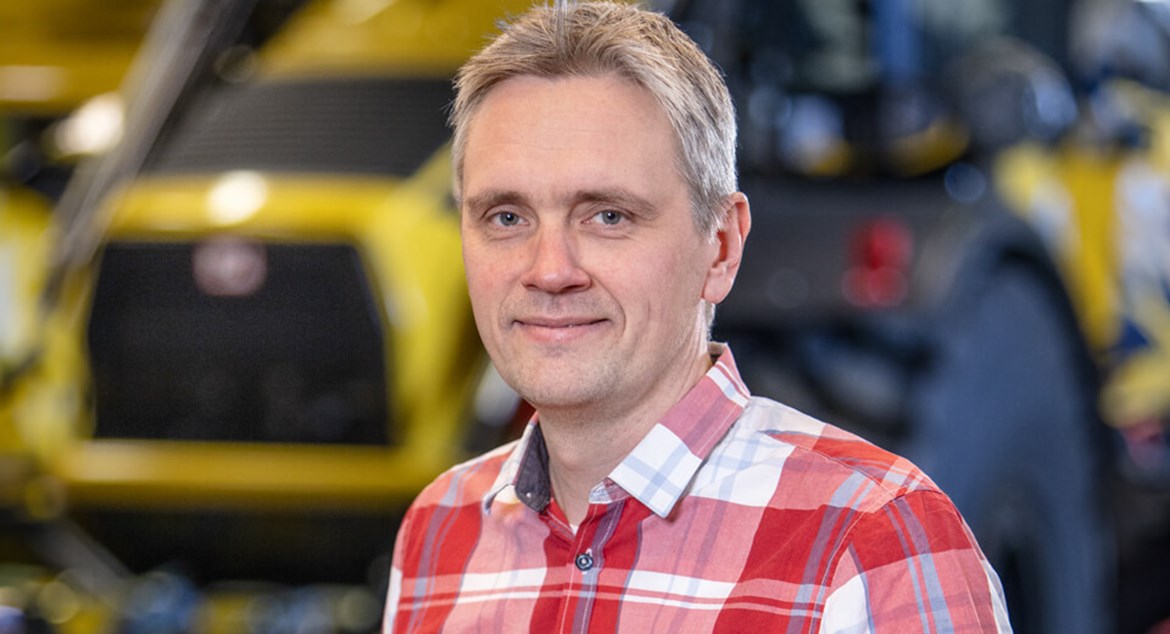EMPLOYEE PORTRAITS
Daniel Åkerström
Engineer

"A classmate who had a summer job at Huddig called me when they needed reinforcement in the engineering department. The main tasks were to make changes to drawings, such as moving a hole for cabling on a drawing so that it did not have to be performed in production. This was in 2000."
Daniel has had a great interest in electricity and electronics since childhood. When he was asked by then-design manager Kjell-Åke Bodell to start working with the electronic system of the HUDDIG machines, he eagerly accepted.
"The electrical system needed to be reviewed to create a drying interval for the windshield wipers. This means interval wipers that do not run continuously but at a certain interval, for example, every ten seconds. Only Kjell Åke was involved in electrical systems then, so it was a great honor to learn from the "grandfather of the HUDDIG machine."
Daniel's next project was to design and introduce a new control system in the then-model HUDDIG 860 with the design/engineering team. The software was also to be submitted to the machine. Since then, Daniel has worked chiefly with electrical systems and software for all subsequent models.
"Besides electrical systems and software, there is much work with mechanics and hydraulics. I need to keep track of the 3D model and know exactly where and how the control system controls a valve for the hydraulics, for example. Everything is connected, and that is one of the things that fascinates me most about my job."
A strong memory for Daniel is when the C series, a vast technological step and shift in the HUDDIG family, saw the light of day. Two machines, HUDDIG 1060B and HUDDIG 1260B, were combined into one.
"Simply put, we took a valve and connected the hydraulic systems. This generated 1700 new part numbers, and several components were removed from that series. Besides TIGON, it is one of the most significant shifts we have made. The gains are great when we develop new models because we always save the best in each model. We have done everything from the C series involving significant changes to minor ones. Another example was when we went from 300 connection points to 200. Suddenly, you have 100 fewer places where oil could leak. This is made possible by a design change, such as including specific equipment as standard with a tight coupling."
Curiosity and collaboration with colleagues are two strong driving forces for Daniel. A successful example is when RCI, the measurement system for railways, became a requirement. It was introduced to prevent the machine from tipping when the operator works off the track.
"The HUDDIG machines were already equipped, so we could build such a system in-house and then update the software in our customers' machines. Here, HUDDIG customers were one step ahead, and we provided a good service - a win-win situation. The more knowledge we have in the company, the more likely we can do such things also in the future."
From 2005 to 2015, with some minor exceptions, Daniel was alone in making software. Now he has two colleagues, Fabian and Emil. The term Mechatronics Engineer is something that more and more people are familiar with, given that hydraulic functions are being replaced by electrically controlled, software-driven solutions.
"To work in our team, you need to know how electrical systems and software work - basic knowledge is important, but being curious about technology, wanting to learn more, and fitting into the group socially is key. We are team builders and need team players who want to develop together. It's a great time now that I have my competent and fun colleagues to work with. We come up with such fantastic solutions together," Daniel concludes.
